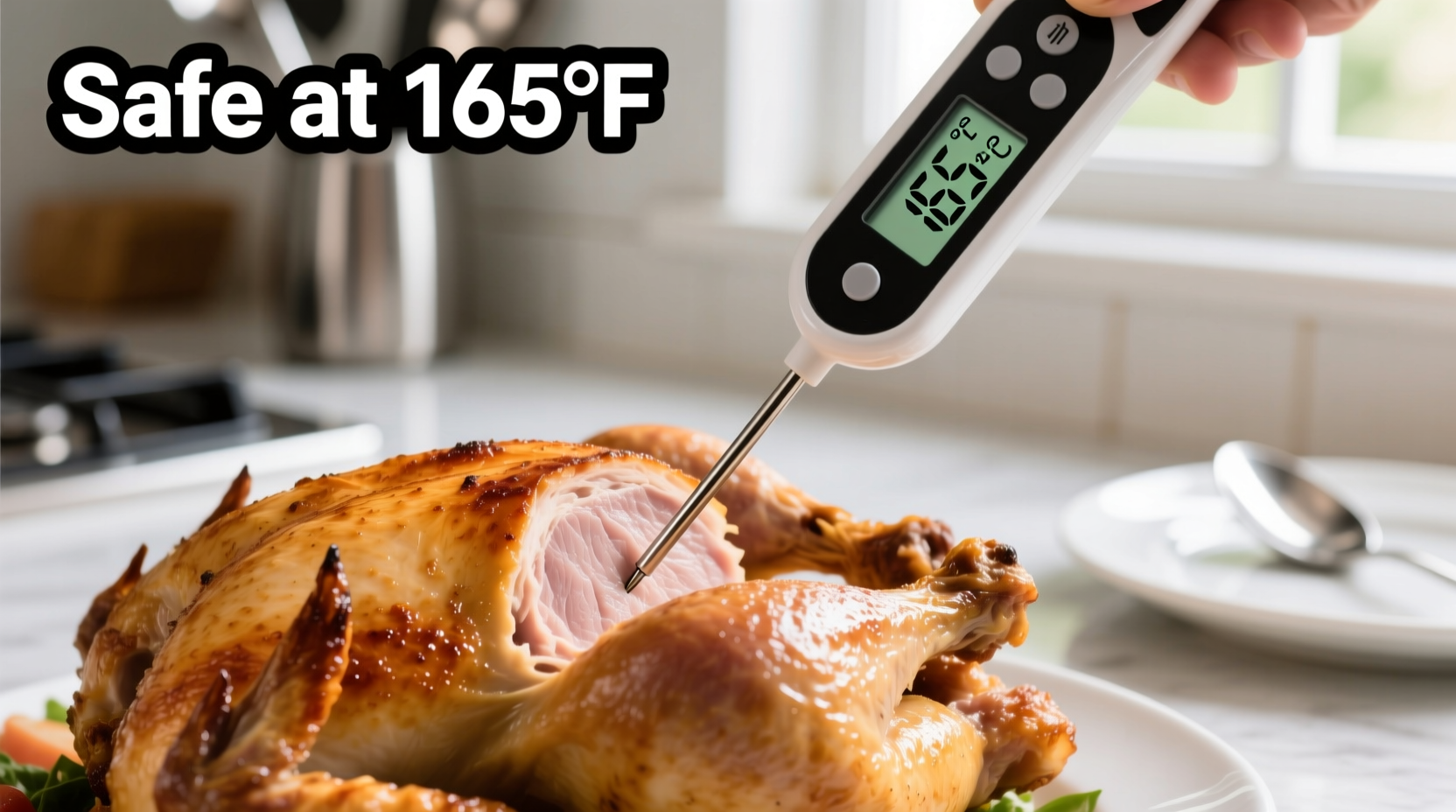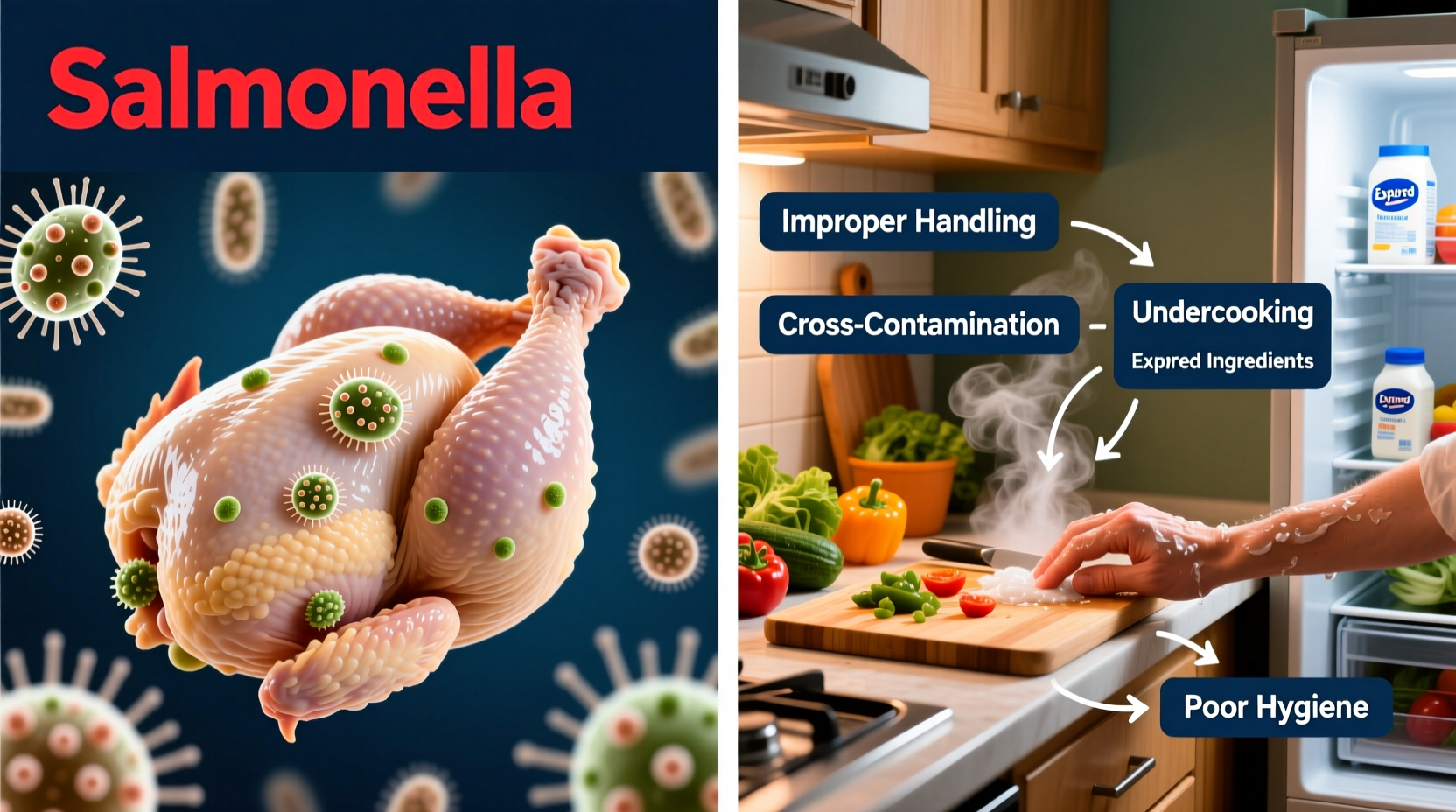Food poisoning is primarily caused by four categories of contaminants: bacteria (like Salmonella and E. coli), viruses (especially norovirus), parasites, and toxins. According to the CDC, bacteria cause nearly 70% of diagnosed foodborne illnesses in the United States, with norovirus responsible for about 20%. Understanding these causes helps you implement targeted prevention strategies that can reduce your risk by up to 75%.
Each year, approximately 48 million Americans experience food poisoning, leading to 128,000 hospitalizations and 3,000 deaths. While most cases resolve within days, knowing exactly what causes foodborne illness empowers you to make smarter food safety decisions. Let's examine the specific pathogens and conditions that transform safe food into a health hazard.
The Four Main Causes of Food Poisoning Explained
Bacterial Contamination: The Most Common Culprit
Bacteria cause the majority of food poisoning cases and represent the most significant food safety concern. These microscopic organisms multiply rapidly under favorable conditions, producing illness-causing toxins or directly infecting your digestive system.
Salmonella remains the leading bacterial cause, responsible for approximately 1.35 million infections annually in the US. This pathogen commonly contaminates:
- Raw or undercooked poultry and eggs
- Unpasteurized milk and juice
- Raw fruits and vegetables (through contaminated water)
E. coli O157:H7 produces powerful toxins that can cause severe abdominal cramps, bloody diarrhea, and kidney failure. High-risk foods include:
- Undercooked ground beef
- Raw milk
- Contaminated leafy greens
According to CDC surveillance data, proper cooking to 160°F (71°C) destroys E. coli, while Salmonella requires cooking to 165°F (74°C). Temperature abuse—keeping food in the danger zone between 40°F and 140°F—allows these bacteria to multiply to dangerous levels within just two hours.
Viral Causes: Norovirus Dominates
Norovirus causes nearly 20 million foodborne illnesses each year in the United States, making it the second most common cause after bacterial infections. Unlike bacteria, viruses cannot grow in food but spread through:
- Infected food handlers with poor hand hygiene
- Contaminated water used in food preparation
- Cross-contamination from surfaces
Norovirus particularly thrives in ready-to-eat foods like salads, sandwiches, and shellfish. The FDA Food Code emphasizes that proper handwashing remains the most effective prevention method since norovirus resists many common disinfectants. Unlike bacterial infections that often require contaminated food to be consumed, viral food poisoning frequently spreads through the "fecal-oral route" when infected individuals handle food without proper sanitation.

Parasites and Toxins: Less Common but Serious Threats
While less frequent than bacterial or viral causes, parasites and toxins can cause severe, long-lasting illness:
- Giardia - Transmitted through contaminated water, often in wilderness settings or through improperly washed produce
- Cryptosporidium - Resistant to chlorine, commonly found in recreational water and contaminated produce
- Ciguatera fish poisoning - Caused by toxins in certain reef fish, not destroyed by cooking
- Scombroid poisoning - Results from histamine buildup in improperly stored fish
Parasitic infections often have longer incubation periods (sometimes weeks) compared to bacterial infections, making source identification challenging. The CDC reports that international travelers face increased risk of parasitic foodborne illnesses, particularly when visiting regions with different food safety standards.
High-Risk Foods and Their Common Contaminants
Understanding which foods carry the highest risk helps you prioritize prevention efforts. The following table identifies common contamination sources:
| Food Category | Common Pathogens | Prevention Strategy |
|---|---|---|
| Raw poultry | Salmonella, Campylobacter | Cook to 165°F (74°C), prevent cross-contamination |
| Ground beef | E. coli O157:H7 | Cook to 160°F (71°C), avoid pink color |
| Raw shellfish | Vibrio, norovirus | Source from approved waters, cook thoroughly |
| Leafy greens | E. coli, Salmonella | Wash thoroughly, check recall notices |
| Unpasteurized dairy | Salmonella, E. coli, Listeria | Choose pasteurized products |
The Critical Timeline: From Contamination to Symptoms
Incubation periods vary significantly by pathogen, which affects diagnosis and prevention strategies:
- Staphylococcus aureus: Symptoms appear within 30 minutes to 8 hours (toxin-mediated)
- Norovirus: 12-48 hours incubation period
- Salmonella: 6 hours to 6 days before symptoms appear
- Listeria: Can take up to 70 days to cause illness
This variability explains why pinpointing the exact food source can be difficult. The FDA emphasizes that proper food temperature control throughout the supply chain remains the most effective prevention method, as most pathogens multiply rapidly between 40°F and 140°F (the "danger zone").
Practical Prevention Strategies by Cause
Tailoring your food safety practices to specific causes dramatically improves effectiveness:
For Bacterial Causes
- Cook meats to proper internal temperatures using a food thermometer
- Refrigerate perishable foods within 2 hours (1 hour if above 90°F)
- Separate raw meats from ready-to-eat foods during storage and preparation
For Viral Causes
- Wash hands thoroughly with soap for 20 seconds before handling food
- Avoid preparing food when experiencing gastrointestinal symptoms
- Use designated cutting boards for produce versus meats
For Parasites and Toxins
- Wash all produce under running water (even items with peels)
- Source seafood from reputable suppliers following FDA guidelines
- Follow proper fish storage protocols to prevent histamine formation
The USDA Food Safety and Inspection Service reports that using a food thermometer correctly could prevent nearly 90% of bacterial food poisoning cases. Many people rely on visual cues like meat color, but research shows these methods fail to detect dangerous pathogen levels consistently.
When to Seek Medical Attention
Most food poisoning cases resolve without medical intervention, but watch for these warning signs that indicate a more serious condition:
- Diarrhea lasting more than 3 days
- High fever (above 102°F)
- Signs of dehydration (reduced urination, dry mouth, dizziness)
- Bloody stool
- Nervous system symptoms like blurred vision or muscle weakness
Vulnerable populations—including infants, elderly adults, pregnant women, and immunocompromised individuals—should consult a healthcare provider at the first sign of foodborne illness. Early diagnosis helps determine the specific cause, which is crucial for certain pathogens like Listeria that require specific antibiotic treatment.











 浙公网安备
33010002000092号
浙公网安备
33010002000092号 浙B2-20120091-4
浙B2-20120091-4